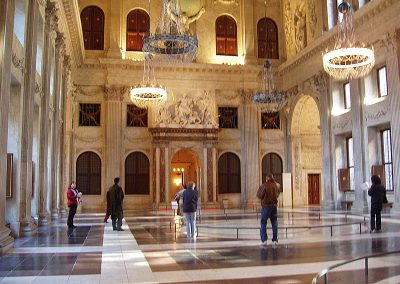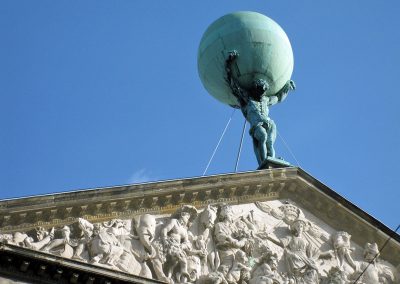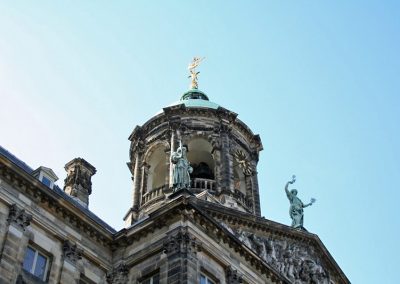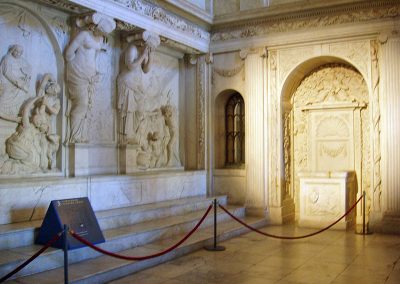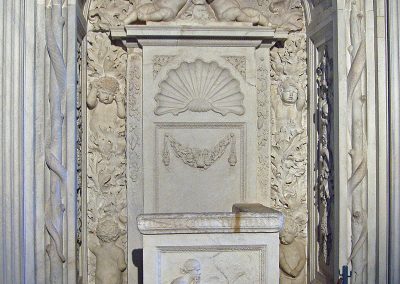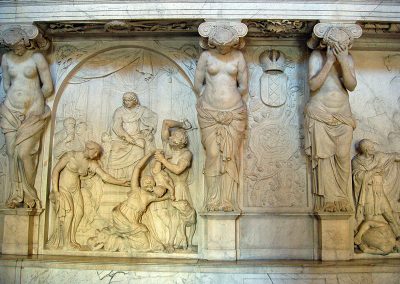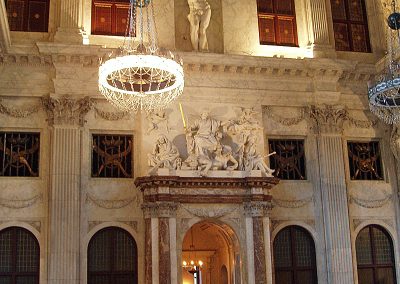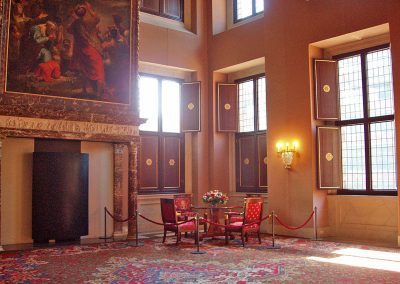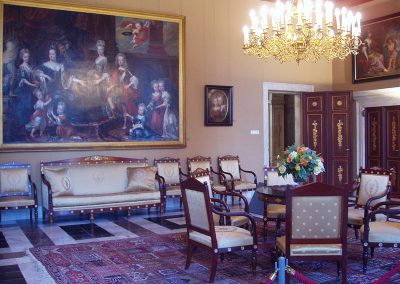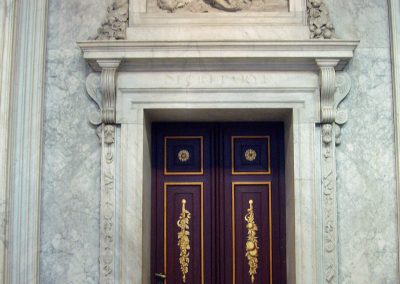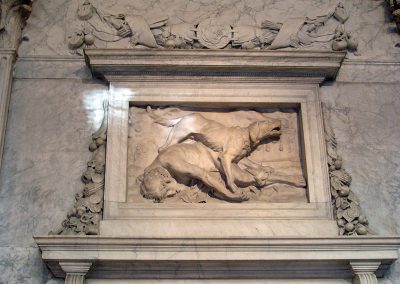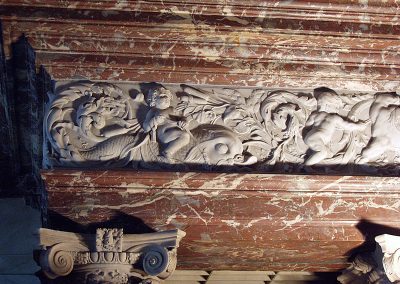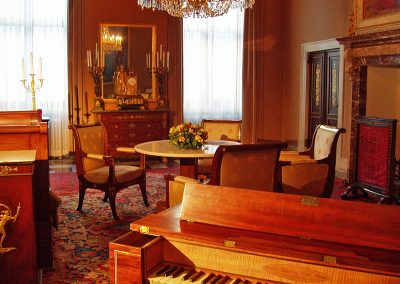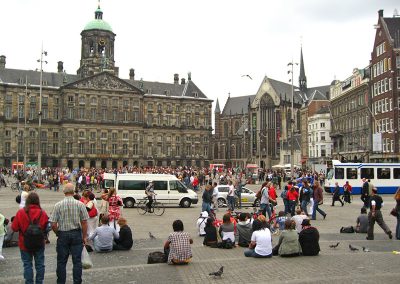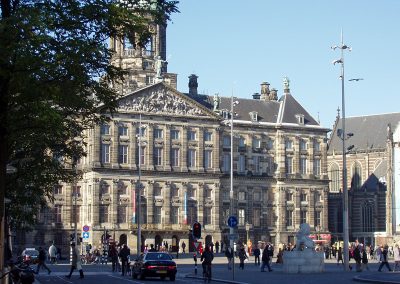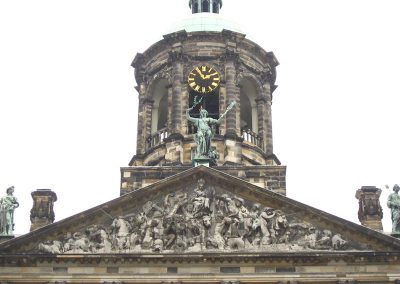A Palace without Royals
Take the number of days in a year (365). Put one before and nine after it (1 365 9) and you will know how many wooden piles were rammed deep into the soggy soil of Amsterdam to prevent the Royal Palace at Dam Square from collapsing. Royal Palace is a misnomer because the Royal family does not live here. They use the building for official functions.
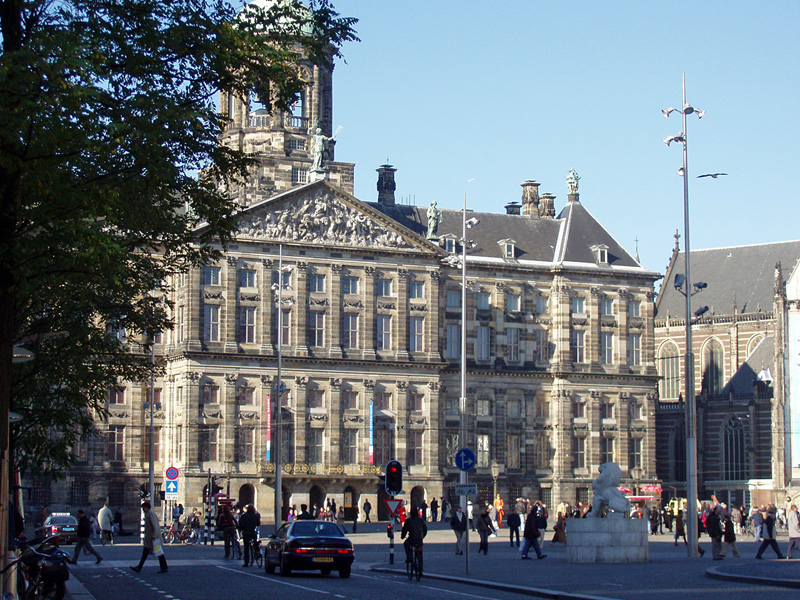
The Royal Palace on Dam Square
The Royal Palace takes up the entire west side of Dam Square. The building started out as Amsterdam’s new town hall, the largest in 17th century Europe. When in 1648, architect Jacob van Campen showed his design to the City Council, the Calvinist majority was dead against it because this secular building would dwarf the New Church (Nieuwe Kerk), also on Dam Square. Earthly values should not preside over spiritual values.
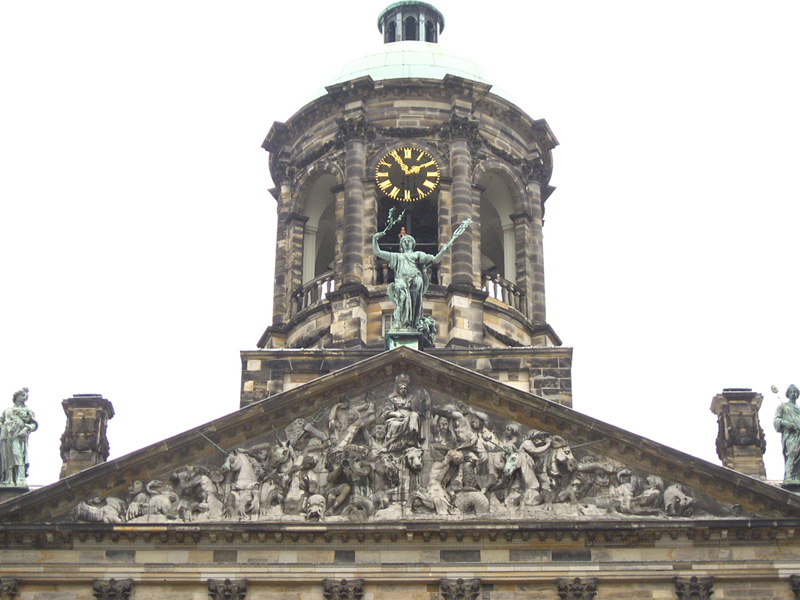
Sandstone
The newly built town hall was a sparkling white building. Over the years the sandstone façade turned into a deep grey colour, not caused by pollution but a chemical reaction of the sandstone. A dark blackish grey layer protects the stone when it gets older. The clean-up of the façade a few years ago is controversial. Several experts claim that cleaning affected the building stones in an adverse way.
Amsterdam City Maiden
Take out your binoculars and examine the examine the bas-relief pediment. The allegorical Amsterdam City Maiden holds an olive branch and Mercury staff, both symbols of peace. Swirling sea gods and water deities pay homage to her, while three figures symbolizing Prudence, Peace and Justice look on approvingly.
Sandstone.
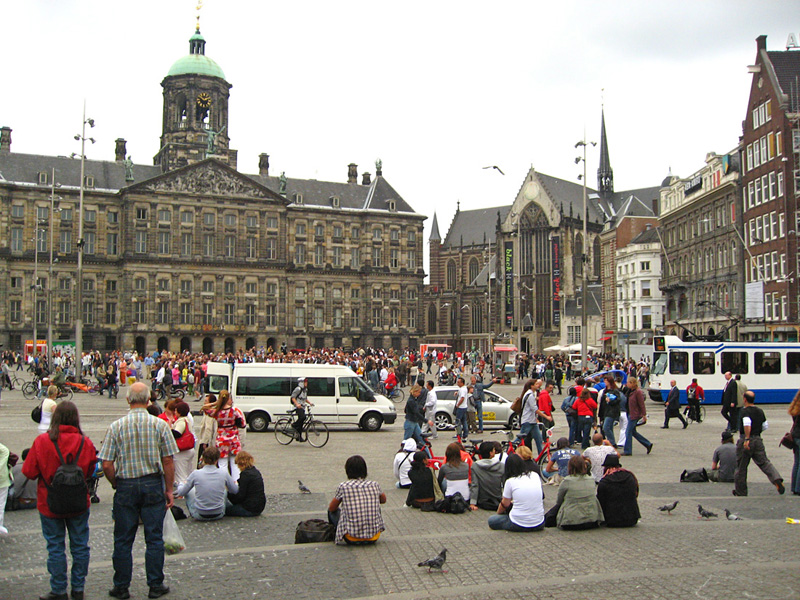
Amsterdam City Maiden
Take out your binoculars or use the zoom function of your camera and examine the bas-relief pediment. The allegorical Amsterdam City Maiden holds an olive branch and Mercury staff, both symbols of peace. Swirling sea gods and water deities pay homage to her, while three figures symbolizing Prudence, Peace and Justice look on approvingly.
Back Pediment
Walk to the back of the building. Here the pediment is even more interesting and more opulent. The four then-known continents: Europe, Africa, America and Asia bring Amsterdam City Maiden commodities that were actually traded in 17th century Amsterdam. Allegorical Europe carries the cornucopia, symbol of fertility. Next to her frolics a horse, symbol of power. A naked woman wearing a sunhat and bead necklace represents Africa. A snake, a lion and an elephant accompany her. The woman in the turban personifies Asia. She brings spices and tulips. America is shown as a man in feathered headgear. Near him an alligator, a crocodile, a monkey and a little boy carrying a bundle of sugar cane.
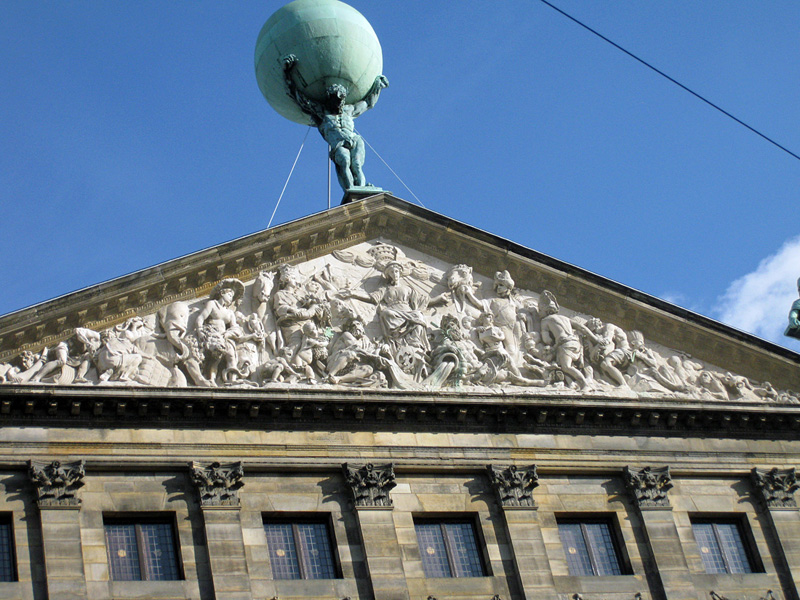
Entrance Doorway
At the front of the palace you will search in vain for an imposing central doorway. There is none. Entrance to the palace is through a measly door, more fitted for tradesmen than for Royals. A grand front door was left out deliberately in case an angry mob would storm the building in response to unpopular decisions taken by the City Council.
Palace Visit
Enter the palace and climb a broad staircase to the first floor. Originally the way up was via two narrow staircases, easier to defend against a rioting mob. When Napoleon Bonaparte’s brother, Louis, was appointed King of Holland, Louis Napoleon adopted the Town Hall as his Royal Palace. Louis converted the narrow staircases into wide sweeping steps more suitable to receive Royal guests.
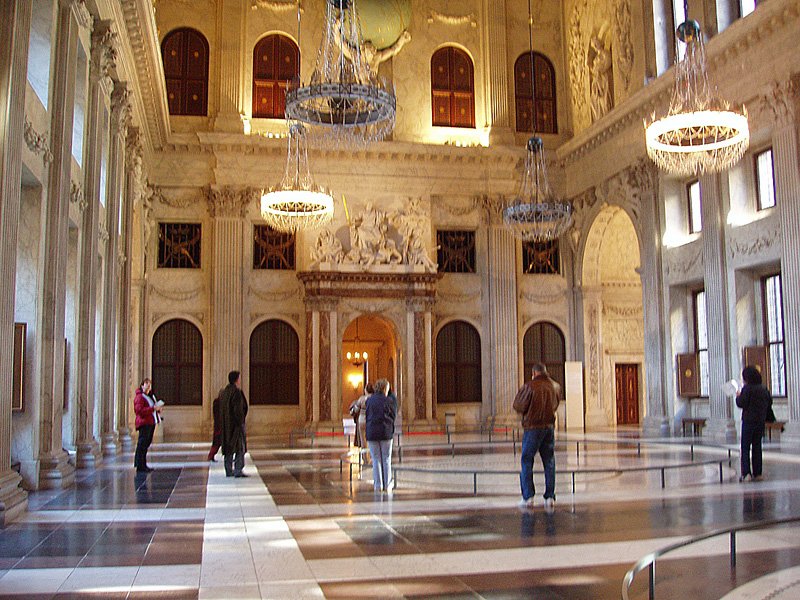
Burgerzaal
When you reach the top of the stairs, the Burgerzaal stretched in front of you. The hall occupies the heart of the palace. It is 30 m high and runs the length of the building. By virtue of its celestial floor maps, this airy white-marbled hall represents the universe contained in one single room, with Amsterdam at the centre.
The Eleventh Hour
The clock on the far wall is constantly set to eleven o’clock, indicating that justice is possible also at the last hour. The chairs, tables and even the grand piano look like doll house furniture such is the vastness of the hall. Most clocks, chandeliers and Empire furniture date from 1808 when Louis Bonaparte settled in. He also added the balcony room where important announcements are made.
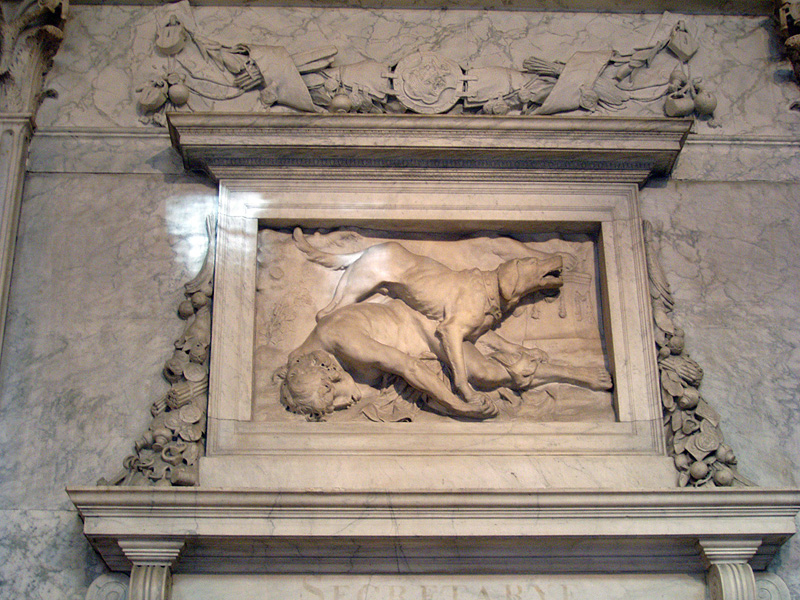
Marble Reliefs
Scattered throughout the palace are marble reliefs with witty touches. Caryatids look bored with supporting cross beams. Cocks are fighting and Apollo tries to find a solution to their dispute. Icarus takes a tumble outside the Bankrupt’s Court. He is surrounded by hungry rats scurrying about. Some of them nibble at empty coffers and unpaid bills.
Poor Atlas!
When outside again, look up! On the roof Atlas staggers under his burden, a 1,000-kilogram copper globe. What will happen if he scratches his back?
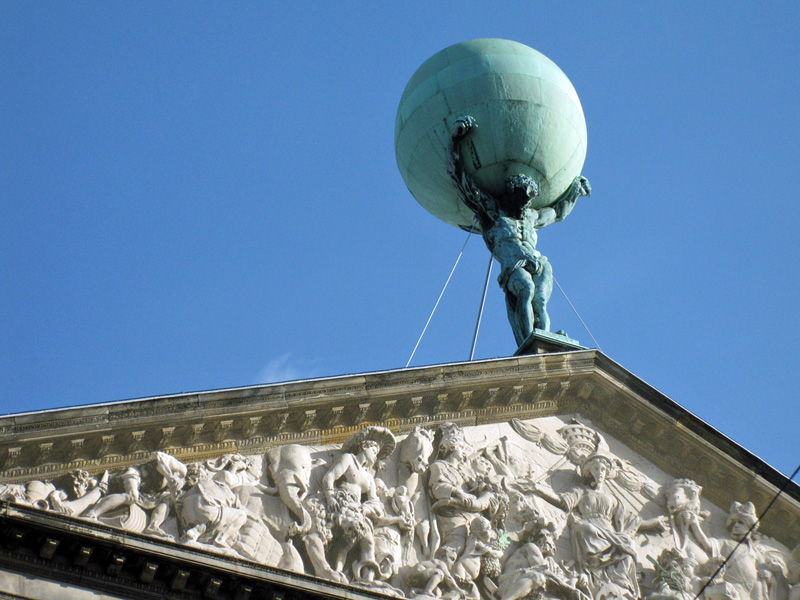
Exhibitions
Rotating exhibitions are held in the Royal Palace in the summer months. Every autumn, the exhibition of the Royal Award for Modern Painting is staged in the Palace.
Address: Koninklijk Paleis / Royal Palace, Dam Square, Amsterdam
The Royal Palace is open to visitors most days of the year unless there are royal functions. Check the Royal Palace website for opening days and current exhibition.
Next article Amsterdam honours Anne Frank
Previous article Bridge of fifteen bridges

